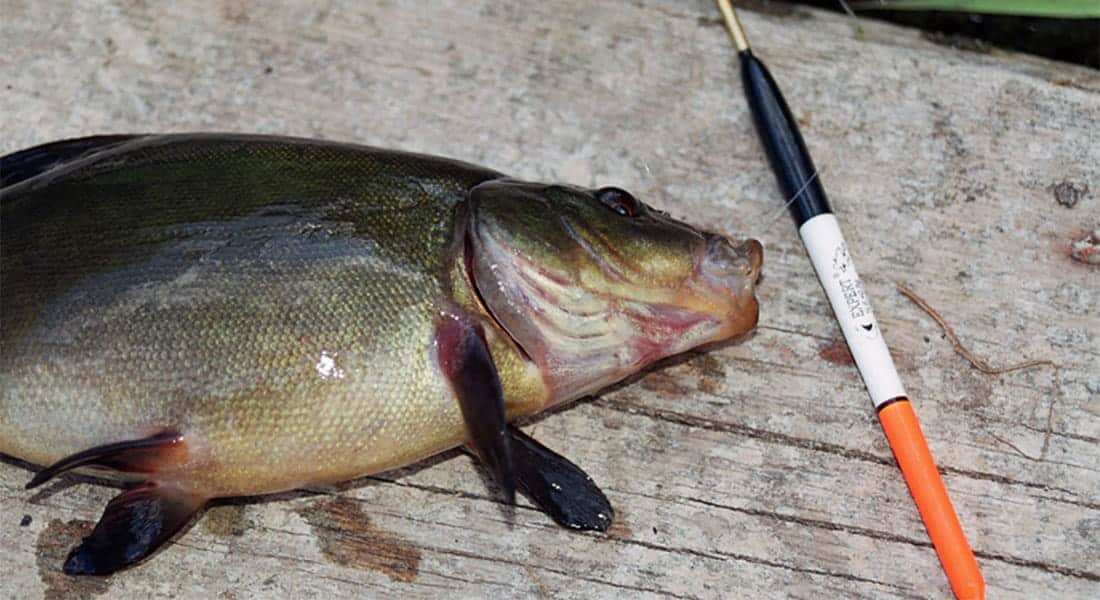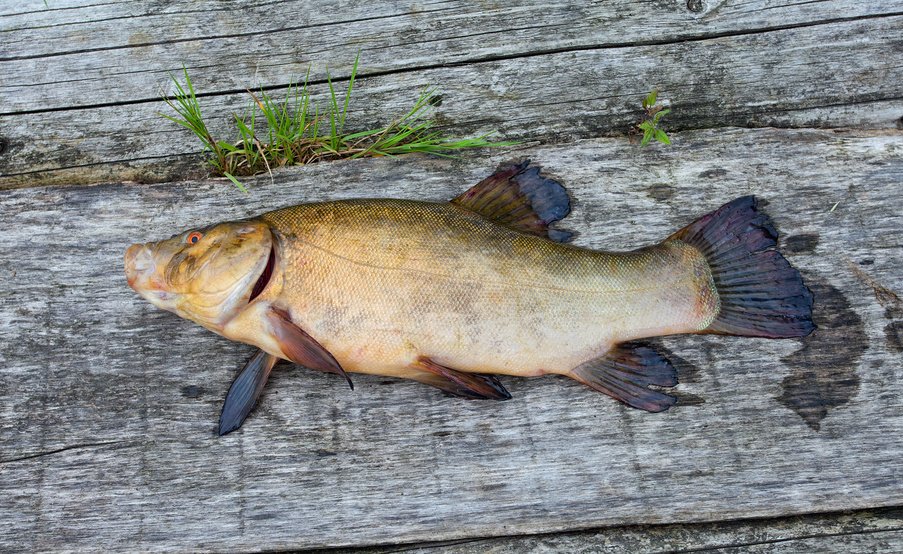Tench is a coveted trophy of every fisherman. But its purposeful fishing has a number of nuances, non-observance of which leads to a significant decrease in the number of fish bites, especially those realized. A regular float rod is considered a classic tackle for line fishing, but it also requires appropriate equipment and settings. The habits of this fish, in particular, its caution, largely determine the tactics of fishing. In any case, catching tench with a float rod in summer is very exciting, and its success will say a lot about the skill of the fisherman.
- Tench habits and promising places of its parking
- Rigging a float rod for a tench – how to assemble a catchy tackle
- Attachments and baits when catching tench on a float
- Tactics for catching tench with a float rod
- Choosing a promising place
- Fishing time and weather
- Lure
- Biting and hooking tench, playing
- Tricks and secrets
- Поделиться ссылкой:
Tench habits and promising places of its parking
The tench prefers reservoirs with a weak current or with stagnant water – it is undemanding to the oxygen content in the water, approaching by these indicators to an absolutely unpretentious
crucian carp… But, unlike the same crucian carp, the tench does not tolerate the territory of clean water, always choosing for itself a section of the reservoir with thickets of reeds, water lilies and other aquatic plants. Therefore, when going on a fishing trip for this fish, you should immediately be prepared for the fact that you will have to fish in the very immediate vicinity of the vegetation. Most often, the tench prefers shallow areas of the reservoir, with a depth of 0.4 to 1 meter, the bottom of which is covered with a small layer of silt. In it, he seeks his food: crustaceans, molluscs, insect larvae and other small invertebrates. Adults can also feed on algae and detritus. The tench is a rather sedentary fish, and even in search of food does not go far from its usual places, moving, as a rule, one by one.
The tench begins to feed actively when the water warms up to 15 ° C, while in the cold season it is inactive. It spawns at a temperature of 18–20 ° C around May-early June, and in some areas with a cold climate even in August, after which it gets sick for about a week, and then again increases feeding activity.

Rigging a float rod for a tench – how to assemble a catchy tackle
To catch a tench, a rod is usually taken from 4 to 6 meters in length, which is rather light enough to allow casting into “windows” among vegetation. The rod should have a rigid action so that you can quickly bring the hooked fish out of the thicket, but a rather soft sensitive tip to soften the hook. The thickness of the line is taken based on the size of the tench that lives in the reservoir. Usually the rod is equipped with a main mono line with a diameter of 0.2 to 0.3 mm, which is enough to catch even large individuals weighing up to 2-3 kg. Leash with a diameter of 0.12-0.18 mm. A much bigger problem is usually the grappling with vegetation when playing hooked fish, which tends to escape into the thicket. The float should be attached to the line at several points, preferably at three, in order to provide sufficient sensitivity – the line is caught from the bottom,while the pellet of the cut lies in the silt. Usually the float is taken small, up to 3-4 grams of carrying capacity. It is advisable that on the part of the float that is in the water, there are no bright stripes or cambrics that can alert the fish.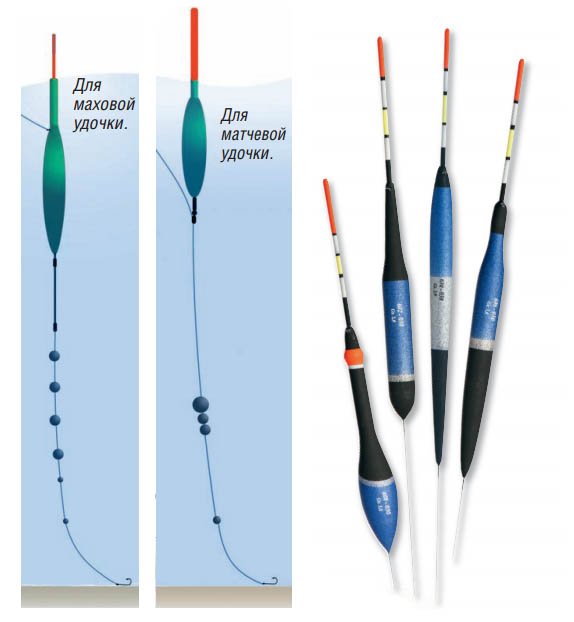
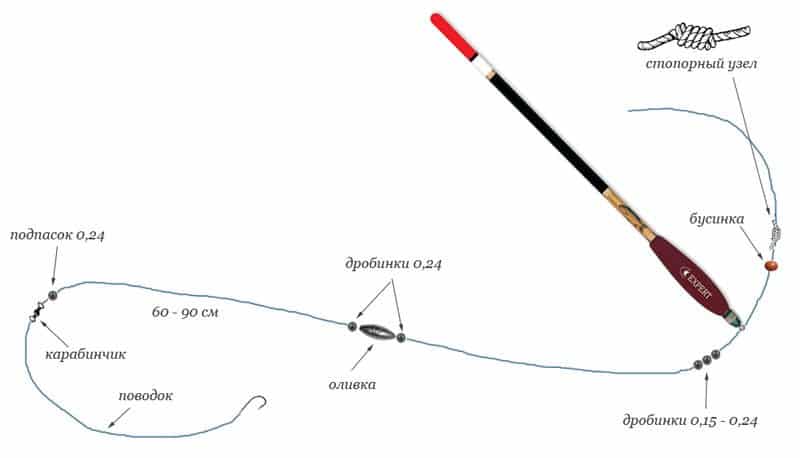
Attachments and baits when catching tench on a float
The most popular tench bait is the worm. Dung, rainfall, and a large crawl will do when it is supposed to catch trophy individuals. In addition, the following baits and baits are used by fishermen:
- leeches;
- dragonfly larvae;
- shellfish meat;
- caddisflies;
- maggot ;
- wheat flour bread or dough ;
- pearl barley ;
- processed cheese dough with the addition of cottage cheese.
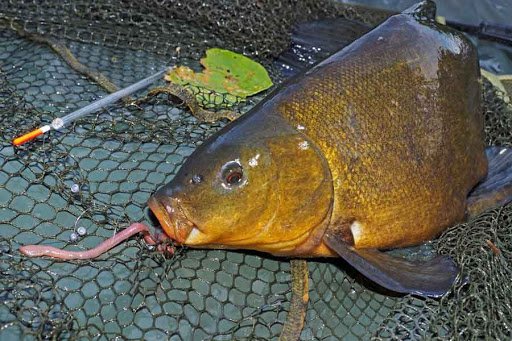
Most often, it is animal bait that is used, however, the question of the demand for bait should be approached based on the requests of the tench in each specific reservoir. Typically, the normal worm wins most of the time. Particularly noteworthy are the aromas of vegetable baits. It is best to use natural aromas – for example, honey, without resorting to frank “chemistry”. In order not to waste time looking for the best bait in some body of water, it is better to ask local fishermen about it. The effectiveness and choice of bait largely depends on the preferences of the tench in a particular reservoir. Boiled cereals are used more often – wheat,
corn, pearl barley. Sometimes ready-made groundbaits of industrial production show themselves well, but there is no single recipe, everywhere and always showing high efficiency. https://youtu.be/6Au68IZ19VU
Tactics for catching tench with a float rod
The success of tench fishing is largely determined by the tactics of fishing. If you do not follow the basic requirements for caution and site selection, the chances of catching this fish are significantly reduced.
Choosing a promising place
When fishing for tench, it is worth approaching the choice of a promising place with special care. In many ways, this determines the effectiveness of fishing. It is worth paying attention to the following nuances:
- The best places for fishing on lakes and ponds are the boundaries of thickets with clear water, vegetation with “windows” at a distance of 4-10 meters from the coast, in extreme cases – in the immediate vicinity of underwater driftwood;
- The rivers are promising places with a slow current, floods with reeds, stretches and quiet backwaters;
- The bottom should be silty, the line should not stand in areas with a rocky or hard clay surface;
- Noisy and crowded places should be avoided, the careful tench simply leaves them.
There are companion plants of tench: these are horsetail, cattail, reed, egg capsule, urut, pondweed and sedge. Many of them feed on adults of this fish. But the tench avoids thickets of arrowhead, elodea and hornwort. The tench’s companions among fish are often gold and goldfish or carp, roach.
Fishing time and weather
Lin does not like bright light, the best time to catch it is early morning or evening twilight. At this time, the fish are most active. Bites in the middle of a sunny day are often random. The ideal line weather is light drizzling rain or thick fog. Under these conditions, tench can bite all day long. It is even better if such weather persists for a long time, so that there are no sudden jumps in atmospheric pressure. Tench is caught only in the warm season in late spring from May to late summer. With the onset of cold weather, he stops feeding and there is no hope of catching him.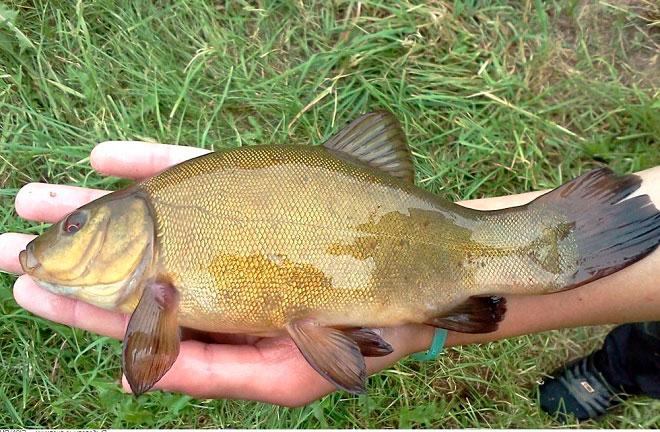
Lure
The bait should be sent to the fishing spot without unnecessary noise. It should not be plentiful, just to irritate the fish, to induce appetite. Tench activity is often indicated by streaks of small air bubbles, which the fish raise to the surface, digging in the silt. After casting the bait, as a rule, you need to wait from 0.5 to 1 hour until the fish calms down and is not interested in the bait.
Biting and hooking tench, playing
The tench is very careful, its bite is often very lazy, which creates additional difficulties in its implementation. It is necessary to withstand some time for the fish to swallow the bait or bait and only then to make the hooking. If several worms are put on the hook at once, they have long “tails”, it is necessary to pause longer before striking, since the fish does not immediately swallow them. When fishing is carried out with barley or dough, the pause may be shorter. The hooked fish has strong resistance when playing. So that it does not go into the thickets, and there is no catch, it is better to bring it ashore in a somewhat forced mode. Fishing for crucian carp and tench with a float rod – video from fishing: https://youtu.be/-jGQUeI6Exo
Tricks and secrets
The tench is very careful, and therefore the success of fishing largely depends on the behavior of the fisherman, his patience and knowledge of the habits of this fish. The following secrets and subtleties of fishing will help make fishing more effective:
- When sedentary, the tench quickly explores all the surroundings of its camp, and even a small change in them can alert the fish. Therefore, cutting out vegetation, preparing windows for fishing is justified only in the long term, when it is possible to wait a few days for the fish to get used to the changes that have occurred.
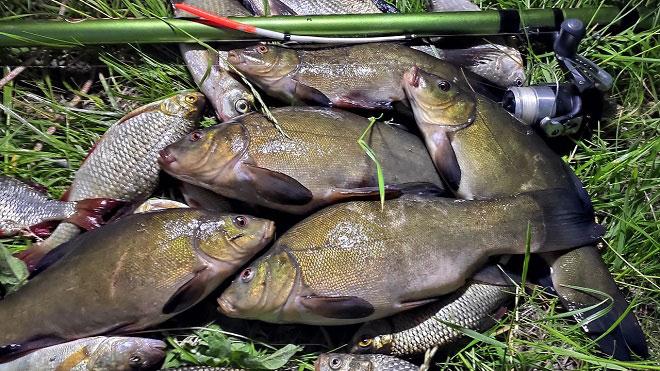
- In no case should you speak loudly while fishing on the tench – even in the floor of your voice. The fisherman’s clothing should be camouflage or dark in color; it is better to sit on the shore, and not stand without making unnecessary movements.
- When fishing from a boat, you need to approach the place of fishing as carefully as possible , without making splashes with oars. Fussing and fidgeting in the boat is also undesirable. It is best to stop a few meters from the place of the intended cast. Fishing close to the side of the boat, as a rule, does not give any results.
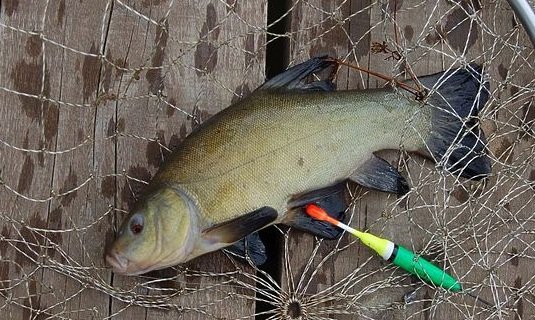
- After catching one fish, the nibble in place for a while dies down – the tench feeds one by one, and the noise from playing scares the fish away. Therefore, if possible, it is better to lure several places at the same time, so as not to interrupt the fishing.
- One of the best baits is turf, which is filled with a handful of worms . Once in the water, they get out, luring the fish.
- Some fishermen successfully use the following fishing tactics: several float rods are thrown in promising places , after which they are fixed so that the fish does not drag them into the water. At the same time, the fisherman is at a distance, watching the floats. The tench is spotted by itself, after which the main task becomes its withdrawal from the thickets.
Catching tench in June on a float rod, choosing a place, bait and baits – video from the recognized experts Shcherbakov brothers: https://youtu.be/-XvCusrIGOg … And if you follow certain rules, fishing on it will certainly be crowned with success.
